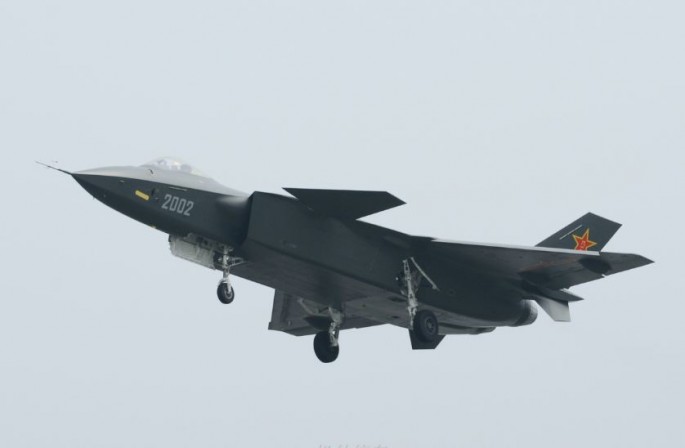China has completed production of its fourth Chengdu J-20 heavy stealth fighter and expects the first squadron of 12 jets to become operational by 2018, as originally announced.
The J-20, however, will come too late to have any influence on events in the South China Sea should simmering tensions between China and the United States ignite into a naval war this year or in 2017.
It will also be unable to prevent the two fifth generation American rivals it copied -- the F-22 Raptor and the F-35 Lightning II -- from sweeping Asian skies clear of China's outmatched fourth generation fighters such as the Shenyang J-11 and the Chengdu J-10.
Both the F-22 and the F-35 have reached operational capability, the F-22 in 2012 and the F-35 this year.
The Chengdu Aircraft Corporation is expected to have manufactured 12 J-20s for the People's Liberation Army Air Force (PLAAF) by 2017. These fighters will then be shaken down before becoming operational by 2018.
An inferior engine means the J-20 will be unable to engage the F-22 and F-35 on anything approaching equal terms in air-to-air combat. This disadvantage will limit the J-20 to hunting inferior aircraft such as U.S. aerial tankers, cargo aircraft and unmanned aerial drones.
The J-20's inferior air-to-air combat capability will also likely relegate it to the role of a long-range strike fighter either designating U.S. warships for Chinese anti-ship ballistic missiles or attacking these surface targets.
The engine that should make the J-20 less inferior to the U.S. stealth aircraft -- the Xian WS-15 -- will apparently reach the aircraft in 2018. The first J-20s will be powered by the unreliable and less powerful WS-10 engine.
In contrast, the Pentagon will deploy the U.S. military's first operational F-35 Lightning II stealth fighters to Japan this December as tensions with China over the South China Sea continue to simmer.
It said 10 F-35B Joint Strike Fighters of the U.S. Marine Corps will move permanently to Marine Corps Air Station Iwakuni in Japan on or before December.
These jets will be joined by six more F-35B fighters in June 2017 with the arrival of the multipurpose amphibious assault ship USS Wasp (LHD-1). Since 2011, this ship has been testing the F-35B, the version built specifically for the Marines.
The F-35B is a short takeoff and vertical landing (STOVL) variant of the jet. It can also take-off and land vertically like a helicopter.
"I can't wait to get the airplane out to the Pacific," said Lt. General Jon Davis, Deputy Commandant for Aviation, Headquarters Marine Corps.
"It's tailor-made for that part of the world with its fifth generation capability and its expeditionary capabilities to land on a small ship or strip, and flow back and forth between those."
Gen. Davis said the Marines' F-35s are ready for combat now if needed.



























